| home | catalogue | history | references | appendix |
 |
surfresearch.com.au
aboriginal watercraft, 50,000 bp |
The Traditional Watercraft of the Australian Aboriginals.
Introduction
The traditional
water craft of the Australian Aborigines fall into three main
groups; swimming or riding floats, rafts, and bark canoes.
While at European contact, dugout canoes were in use on the northern coasts, these were a comparatively recent introduction, influenced by contact with Indonesian and Melanesian mariners.
The basic swimming or riding float was used as a personal floatation device when crossing large stretches of water, or sometimes as a platform for fishing.
Crucially, these craft were instrumental in the development of swimming, commonly practised both on the coast and on inland waters of Australia.
In the temperate zones, swimming was a standard skill of indigenous mariners, and the accepted method of self-rescue in the case of misadventure.
James Hornell, in his definitive work on the origins of watercraft (1946), noted that the surf board of Hawaii was a direct descendant of the ancient log swimming float.
The raft, the combination of several riding floats, was generally used for the occasional transport of multiple persons or goods.
The most significant occasion was around 50,000 thousand years ago, when Aboriginals first navigated the straits between South East Asia and Australia, a distance of perhaps 90 kilometres, and the first definitive benchmark in maritime history.
Variations of the bark canoe were widespread across the eastern half of the continent, with the most simple designs found in the inland of the south and more complex models on the northern coasts and islands.
Although commonly called a bark or reed canoe, the catamaran of Tasmania was a specialised version of the raft, with ancient parallels on the Nile and across the Pacific.
Source Documents
The first entry is D.S. Davidson's Chronology of Australian Watercraft, which is highly detailed, erudite, and a rare overview of the diverse range of aboriginal watercraft.
Thereafter, the entries in chronological order.
1935 D.S. Davidson: Chronology of Australian Watercraft
Text and illustrations from Journal of the Polynesian Society Volume 44, Thomas Avery & Sons, New Plymouth, NZ, 1935.
1700 William Dampier: Voyage Around the World.
Extracts from Voyage Around the World, 1670, and A Voyage to New Holland, 1729.
1770 James Cook: HMB Endeavour.
Extracts from the Journals and Notes by James Cook, Joseph Banks, and Sidney Parkinson.
Aboriginal rafts and canoes, from 1770.
Images of Aboriginal rafts and canoes.
1788 Watkin Tench: Aboriginals of Port Jackson.
Extracts from Narrative of the Expedition to Botany Bay, J. Debrett, London, 1789.
1788 William Bradley: Eora (Aboriginal) Canoes at Spring Cove.
Extract from The Ladies Kept Their Distance, in Tim Flannery: The Birth of Sydney, Melbourne, 1999.
1797-1892 Michael Organ (ed.): Canoes of SE Australia.
1802 Louis de Freycinet : Canoes of Tasmania.
Extracts from Voyage de decouvertes aux terres australes. Navigation et Geographie, Imprimerie Royale, Paris, 1815.
1818 Phillip Parker King: Aboriginal Rafts and Canoes.
Extracts and illustrations from Intertropical and Western Coasts of Australia,1818 and 1822, Volume 1, John Murray, London,1827.
1826 Dumont d'Urville: Voyage of the Astrolabe.
Descriptions and illustrations from Two Voyages to the South Seas, translated by Helen Rosenman, Melbourne University Press, 1987.
1831 G. A. Robinson: The Aboriginal Rafts, Northern Tasmania.
Printed in The Hobart Town Courier, 22 January 1931, page 4.
1834 George Augustus Robinson: Swimming and Catamarans, Tasmania.
Extracts from Journals, 1934.
Emily Caswell: Aboriginals at Port Stevens,1841.
Quoted in Berres Hoddle Colville: Robert Hoddle, Pioneer Surveyor 1794-1881, Research Pub., Melbourne, 2004, pages 254-256.
1842 J. Lort Stokes: Swimming, Floats and Rafts, North West Australia.
Extracts from Discoveries in Australia, T. and W. Boone, London, 1846.
1850 McGillvray and Brierly: Catamarans, New Guinea.
Extracts and illustrations from Voyage of H.M.S. Rattlesnake, T. and W. Boone, London, 1852.
1862 SMH Correspondents: Canoes in Australia.
The Sydney Morning Herald, 30 June 1862, page 3.
1863 James Martin: Rafts in NW Australia.
1878 Robert Brough Smyth: Aboriginal Rafts and Canoes
, Volume II, Government of Victoria, London, 1878.
1899 Henry Ling Roth: Rafts, Canoes and Swimming, Tasmania.
Extract from The Aborigines of Tasmania, F. King & Sons, England, 1899.
1905 N.W. Thomas : Australian Canoes and Rafts.
Extract from The Journal of the Anthropological Institute of G.B and Ireland, Volume 35, January - June 1905, pages 56-79.
1907 R. H. Matthews : Aboriginal Navigation.
Extract from Journal and Proceedings of the Royal Society of N.S.W., Volume XLI, Government Printer,Sydney, 1907.
1908 W. E. Roth : Australian Canoes and Rafts.
Extract from Man, Royal Anthropological Institute of Great Britain and Ireland, London, 1908, Volume 8, Number 88, pages 160-161.
1930 Donald Thompson: Arnhem Land.
Extracts from Donald Thompson in Arnhem Land, Nicolas Peterson (ed), The Miegunyah Press, Melbourne University, 2003.
1935 D.S. Davidson: Chronology of Australian Watercraft.
Extracts and illustrations from Journal of the Polynesian Society Volume 44, Thomas Avery & Sons, New Plymouth, NZ, 1935.
1946 James Hornell: Swimming Floats and Rafts.
Extracts and illustrations from Water Transport - Origins and Early Evolution, CUP, Cambridge,1946, pages 1 to 4.
1972 Robert Edwards: Aboriginal Rafts and Canoes.
Extracts, illustrations from Aboriginal Bark Canoes of the Murray Valley, South Australian Museum, Rigby, , 1972.
1981 Sean McGrail : Rafts, Canoes and Boats.
Extracts from Rafts, Boats and Ships - From Prehistoric Times to the Medieval Era, National Maritime Museum, London, 1981.
1993 Kate Khan: Catalogue of the W. E. Roth Collection of Aboriginal Artefacts from North Queensland. [Volume 1]
Australian Museum
2005 Debora Smith (Science Editor): Earth's first beachcombers ended up in Australia.
Reporting research developments published in Science, 13 May 2005 in SMH, Weekend Edition, May 14-15, 2005, page 13.
2000 Rupert Gerritsen: Aboriginal Fish Hooks in Southern Australia.
[National Library of Australia, 2000?]
2005 Andrew Long: Aboriginal Scarred Trees in NSW.
NSW Office of Environment and Conservation, 2005.
2007 Martin Thomas (ed): Culture in Translation-The Anthropological Legacy of R.H. Mathews.
While at European contact, dugout canoes were in use on the northern coasts, these were a comparatively recent introduction, influenced by contact with Indonesian and Melanesian mariners.
The basic swimming or riding float was used as a personal floatation device when crossing large stretches of water, or sometimes as a platform for fishing.
Crucially, these craft were instrumental in the development of swimming, commonly practised both on the coast and on inland waters of Australia.
In the temperate zones, swimming was a standard skill of indigenous mariners, and the accepted method of self-rescue in the case of misadventure.
James Hornell, in his definitive work on the origins of watercraft (1946), noted that the surf board of Hawaii was a direct descendant of the ancient log swimming float.
The raft, the combination of several riding floats, was generally used for the occasional transport of multiple persons or goods.
The most significant occasion was around 50,000 thousand years ago, when Aboriginals first navigated the straits between South East Asia and Australia, a distance of perhaps 90 kilometres, and the first definitive benchmark in maritime history.
Variations of the bark canoe were widespread across the eastern half of the continent, with the most simple designs found in the inland of the south and more complex models on the northern coasts and islands.
Although commonly called a bark or reed canoe, the catamaran of Tasmania was a specialised version of the raft, with ancient parallels on the Nile and across the Pacific.
| Watercraft |
Source Documents | Links |
References | From Float to Surf Board |
Source Documents
The first entry is D.S. Davidson's Chronology of Australian Watercraft, which is highly detailed, erudite, and a rare overview of the diverse range of aboriginal watercraft.
Thereafter, the entries in chronological order.
1935 D.S. Davidson: Chronology of Australian Watercraft
Text and illustrations from Journal of the Polynesian Society Volume 44, Thomas Avery & Sons, New Plymouth, NZ, 1935.
1700 William Dampier: Voyage Around the World.
Extracts from Voyage Around the World, 1670, and A Voyage to New Holland, 1729.
1770 James Cook: HMB Endeavour.
Extracts from the Journals and Notes by James Cook, Joseph Banks, and Sidney Parkinson.
Aboriginal rafts and canoes, from 1770.
Images of Aboriginal rafts and canoes.
1788 Watkin Tench: Aboriginals of Port Jackson.
Extracts from Narrative of the Expedition to Botany Bay, J. Debrett, London, 1789.
1788 William Bradley: Eora (Aboriginal) Canoes at Spring Cove.
Extract from The Ladies Kept Their Distance, in Tim Flannery: The Birth of Sydney, Melbourne, 1999.
1797-1892 Michael Organ (ed.): Canoes of SE Australia.
1802 Louis de Freycinet : Canoes of Tasmania.
Extracts from Voyage de decouvertes aux terres australes. Navigation et Geographie, Imprimerie Royale, Paris, 1815.
1818 Phillip Parker King: Aboriginal Rafts and Canoes.
Extracts and illustrations from Intertropical and Western Coasts of Australia,1818 and 1822, Volume 1, John Murray, London,1827.
1826 Dumont d'Urville: Voyage of the Astrolabe.
Descriptions and illustrations from Two Voyages to the South Seas, translated by Helen Rosenman, Melbourne University Press, 1987.
1831 G. A. Robinson: The Aboriginal Rafts, Northern Tasmania.
Printed in The Hobart Town Courier, 22 January 1931, page 4.
1834 George Augustus Robinson: Swimming and Catamarans, Tasmania.
Extracts from Journals, 1934.
Emily Caswell: Aboriginals at Port Stevens,1841.
Quoted in Berres Hoddle Colville: Robert Hoddle, Pioneer Surveyor 1794-1881, Research Pub., Melbourne, 2004, pages 254-256.
1842 J. Lort Stokes: Swimming, Floats and Rafts, North West Australia.
Extracts from Discoveries in Australia, T. and W. Boone, London, 1846.
1850 McGillvray and Brierly: Catamarans, New Guinea.
Extracts and illustrations from Voyage of H.M.S. Rattlesnake, T. and W. Boone, London, 1852.
1862 SMH Correspondents: Canoes in Australia.
The Sydney Morning Herald, 30 June 1862, page 3.
1863 James Martin: Rafts in NW Australia.
1878 Robert Brough Smyth: Aboriginal Rafts and Canoes
, Volume II, Government of Victoria, London, 1878.
1899 Henry Ling Roth: Rafts, Canoes and Swimming, Tasmania.
Extract from The Aborigines of Tasmania, F. King & Sons, England, 1899.
1905 N.W. Thomas : Australian Canoes and Rafts.
Extract from The Journal of the Anthropological Institute of G.B and Ireland, Volume 35, January - June 1905, pages 56-79.
1907 R. H. Matthews : Aboriginal Navigation.
Extract from Journal and Proceedings of the Royal Society of N.S.W., Volume XLI, Government Printer,Sydney, 1907.
1908 W. E. Roth : Australian Canoes and Rafts.
Extract from Man, Royal Anthropological Institute of Great Britain and Ireland, London, 1908, Volume 8, Number 88, pages 160-161.
1930 Donald Thompson: Arnhem Land.
Extracts from Donald Thompson in Arnhem Land, Nicolas Peterson (ed), The Miegunyah Press, Melbourne University, 2003.
1935 D.S. Davidson: Chronology of Australian Watercraft.
Extracts and illustrations from Journal of the Polynesian Society Volume 44, Thomas Avery & Sons, New Plymouth, NZ, 1935.
1946 James Hornell: Swimming Floats and Rafts.
Extracts and illustrations from Water Transport - Origins and Early Evolution, CUP, Cambridge,1946, pages 1 to 4.
1972 Robert Edwards: Aboriginal Rafts and Canoes.
Extracts, illustrations from Aboriginal Bark Canoes of the Murray Valley, South Australian Museum, Rigby, , 1972.
1981 Sean McGrail : Rafts, Canoes and Boats.
Extracts from Rafts, Boats and Ships - From Prehistoric Times to the Medieval Era, National Maritime Museum, London, 1981.
1993 Kate Khan: Catalogue of the W. E. Roth Collection of Aboriginal Artefacts from North Queensland. [Volume 1]
Australian Museum
2005 Debora Smith (Science Editor): Earth's first beachcombers ended up in Australia.
Reporting research developments published in Science, 13 May 2005 in SMH, Weekend Edition, May 14-15, 2005, page 13.
2000 Rupert Gerritsen: Aboriginal Fish Hooks in Southern Australia.
[National Library of Australia, 2000?]
2005 Andrew Long: Aboriginal Scarred Trees in NSW.
NSW Office of Environment and Conservation, 2005.
2007 Martin Thomas (ed): Culture in Translation-The Anthropological Legacy of R.H. Mathews.
Australian National University.
Australian Museum, 6
College Street, Sydney NSW 2010
Indigenous Bark-Canoe from Northern NSW
Michael Organ, UOW:
Australian Aboriginal Canoes
Michael Organ, UOW:
Astrolabe, Jervis Bay, 1826
Australian National Maritime Museum
Bark canoe building at Bents Basin - NPWS Sydney Aboriginal Community Cultural Gathering (2014)
Nawi canoe building workshop - Koori students and Lawrence Hargrave School , Warwick Farm (2014)
Building bark canoe models - Alexandria Park Community School (2012)
Boolarng Nangamai Aboriginal Corporation, Bundanon, and ANMM:
Historians Jim Walliss and instigator Diego Bonetto collaborate with artists Steve Russell and Noel Lonesborough from Boolarng Nangamai Aboriginal Corporation to tackle the challenge of making a traditional (Aboriginal) Jervis Bay canoe from the bark of a stringybark tree sourced on the Bundanon property.
The canoe was constructed in eight hours – following clear directions provided by Maritime Architect Davis Payne from the National Maritime Museum, and contemporary marine artist James Dodd who had constructed two canoes in 2010.
The Siteworks bark canoe was made from traditional materials (with a little help from a Bunnings vice), including string from the stringybark tree and beeswax and resin from the grass tree.
It was then launched as part of Siteworks 2011 on the Shoalhaven River.
Rex Greeno, Family, and National Museum of Australia
The making of a Tasmanian bark canoe
Members of the Tasmanian Aboriginal community and the Maritime Museum of Tasmania
Aboriginal Rolled Bark Canoe
Manganinnie (Film, Tasmania,1980)
https://www.wideangle.org.au/manganinnie-1980
Tawatja: Ningher Canoe
The story behind building a traditional Tasmanian Aboriginal canoe – Dark Mofo 2014
https://ninghercanoe.wordpress.com/2014/06/03/canoe-masters/
Museum Victoria (Yarra Valley)
Aboriginal canoe, 1850.
Jim Poulter (Yarra Valley, Victoria)
How to build a bark canoe
Indigenous Bark-Canoe from Northern NSW
Michael Organ, UOW:
Australian Aboriginal Canoes
Michael Organ, UOW:
Astrolabe, Jervis Bay, 1826
Australian National Maritime Museum
Bark canoe building at Bents Basin - NPWS Sydney Aboriginal Community Cultural Gathering (2014)
Nawi canoe building workshop - Koori students and Lawrence Hargrave School , Warwick Farm (2014)
Building bark canoe models - Alexandria Park Community School (2012)
Boolarng Nangamai Aboriginal Corporation, Bundanon, and ANMM:
Historians Jim Walliss and instigator Diego Bonetto collaborate with artists Steve Russell and Noel Lonesborough from Boolarng Nangamai Aboriginal Corporation to tackle the challenge of making a traditional (Aboriginal) Jervis Bay canoe from the bark of a stringybark tree sourced on the Bundanon property.
The canoe was constructed in eight hours – following clear directions provided by Maritime Architect Davis Payne from the National Maritime Museum, and contemporary marine artist James Dodd who had constructed two canoes in 2010.
The Siteworks bark canoe was made from traditional materials (with a little help from a Bunnings vice), including string from the stringybark tree and beeswax and resin from the grass tree.
It was then launched as part of Siteworks 2011 on the Shoalhaven River.
Rex Greeno, Family, and National Museum of Australia
The making of a Tasmanian bark canoe
Members of the Tasmanian Aboriginal community and the Maritime Museum of Tasmania
Aboriginal Rolled Bark Canoe
Manganinnie (Film, Tasmania,1980)
https://www.wideangle.org.au/manganinnie-1980
Tawatja: Ningher Canoe
The story behind building a traditional Tasmanian Aboriginal canoe – Dark Mofo 2014
https://ninghercanoe.wordpress.com/2014/06/03/canoe-masters/
Museum Victoria (Yarra Valley)
Aboriginal canoe, 1850.
Jim Poulter (Yarra Valley, Victoria)
How to build a bark canoe
A Summary of Historical and
Contemporary Documentation in making a Koorong Paper
presented at Wurundjeri Tribe Council, Koorong
Committee Workshop, May 2012.
Aboriginal Scarred Tree - Bark Canoe (Bairnsdale, Victoria, Australia)
http://www.youtube.com/watch?v=VxFjWb1VIrY
National Museum of Australia (Arnhem Land, Northern Territory, Dr William Warner collection.)
Sewn Bark Canoe
Australian Screen (Northern Territory)
Balanda and the bark canoes
Rolf de Heer oversees the construction of swamp canoes that will be used in the film Ten Canoes (2006),
Aboriginal Scarred Tree - Bark Canoe (Bairnsdale, Victoria, Australia)
http://www.youtube.com/watch?v=VxFjWb1VIrY
National Museum of Australia (Arnhem Land, Northern Territory, Dr William Warner collection.)
Sewn Bark Canoe
Australian Screen (Northern Territory)
Balanda and the bark canoes
Rolf de Heer oversees the construction of swamp canoes that will be used in the film Ten Canoes (2006),
Moogy's Yuki [Moogy's Bark Canoe],
(South Australia)
http://www.youtube.com/watch?v=XP3-8x_s-Xw
State Library of Western Australia (One Arm Point, Kimberley)
Bardi Aborigines constructing a traditional raft,1981
State Library of Western Australia (Frank Bunney collection)
Aboriginal man on a raft spearing fish
National Library of Australia - Western Australian Museum
Double raft by Tom Thomas, Dampier Land Penisular, 1975
Patrick Sullivan: Saltwater, Freshwater and Yawuru Social Organisation (Western Australia)
Wikipedia
Aboriginal Bark Canoes
Aboriginal_Dugout_Canoes
NSW Department of Environment and Heritage
Aboriginal
People and Cultural Life.
Trove
Aboriginal man in canoe, 1887. (State Library Victoria)
Ida Lee: The Logbooks of the Lady Nelson (Project Gutenberg)
http://gutenberg.net.au/ebooks/e00066.html#ch02
References
Barlow, Alex: Aboriginal Technology: Watercraft,
Macmillan Education Australia,1994.
[Junior publication]
Trove
http://trove.nla.gov.au/work/11066240
Brierly, Oswald W.B.:
New Guinea coast and Cape York area during the voyage of H.M.S. Rattlesnake, ca. 1849-1850]
State Library of NSW
http://www.acmssearch.sl.nsw.gov.au/search/itemDetailPaged.cgi?itemID=421776
For extracts and illustrations, see:
1850 McGillvray and Brierly: Catamarans, New Guinea.
MacGillivray, John (1822-1867):
Narrative of the voyage of H.M.S. Rattlesnake, commanded by the late Captain Owen Stanley, during the years 1846-1850 : including discoveries and surveys in New Guinea, the Louisiade Archipelago, etc.; to which is added the account of Mr. E. B. Kennedy's expedition for the exploration of the Cape York Peninsula / published under the sanction of the Lords Commissioners of the Admiralty.
T. and W. Boone, London, 1852, Volume 1.
Project Gutenberg
http://gutenberg.net.au/ebooks/e00031.html
Internet Archive
https://archive.org/details/narrativeofthevo12433gut
For extracts and illustrations, see:
1850 McGillvray and Brierly: Catamarans, New Guinea.
Martin James: Explorations in North-Western Australia.
Journal of the Royal Geographical Society of London, 1865,
Volume XXXV, pages 237-289.
Communicated by the Governor of Western Australia, through the Colonial Office.
For extracts see:
1863 James Martin: Rafts in NW Australia.
www.googlebooks- Ned Overton, May 2014.
http://gutenberg.net.au/ebooks14/1402201h.html#ch-01
Oxley, John: Journals of two expeditions into the interior of New South Wales, London. 1820, pages 332-333.
Pearson, Joseph: Relationships of the Tasmanian Canoe-Raft
Radcliffe-Brown, A R: Australian Rafts in Man Vol 16 No.4 (1916)
Rienits, Rex and Thea: The Voyages of Captain Cook, Paul Hamlyn, London, Sydney, 1968.
Roberts, Kenneth G., Shackleton, Philip:The Canoe - A History of the Craft from Panama to the Arctic.
MacMillan of Canada, Toronto, 1983.
Thomas, N. W.: Australian Canoes and Rafts.
Journal of the Royal Anthropological Institute,1905, XXXV, pp. 56-7
Not yet located.
Also
Ida Lee (Mrs. Charles Bruce Marriott: The Coming of the British to Australia 1788 to 1829.
LONGMANS, GREEN, AND CO.
39 PATERNOSTER ROW, LONDON
NEW YORK AND BOMBAY
1906
Botantical References
Many thanks to Dr Nicholas H. de Jong.
Gary Leonard: Eucalypts of the Sydney Region
Robinson, L.: Field Guide to Native Plants of Sydney, Kangaroo Press, 1991.
Fuller, L.: Native Trees of Central Illawarra, Weston & Co., 1985.
Kevin Mills: The Natural Vegetation of the Jervis Bay Region of New South Wales, UOW, Wollongong, 1993.
Kevin Mills: The Natural Vegetation of the Jervis Bay Region of New South Wales, UOW, Department of Geography, [1998].
http://www.youtube.com/watch?v=XP3-8x_s-Xw
State Library of Western Australia (One Arm Point, Kimberley)
Bardi Aborigines constructing a traditional raft,1981
State Library of Western Australia (Frank Bunney collection)
Aboriginal man on a raft spearing fish
National Library of Australia - Western Australian Museum
Double raft by Tom Thomas, Dampier Land Penisular, 1975
Patrick Sullivan: Saltwater, Freshwater and Yawuru Social Organisation (Western Australia)
Chapter
6, in Peterson and Rigsby: Customary Marine Tenure in Australia, University of
Sydney
(1998).
Keith Vincent Smith: Mari nawi ("big canoes"): Aboriginal voyagers in Australia's maritime history, 1788-1855.
PhD. Thesis, Macquarie University, Australia, 2008.
Keith Vincent Smith: Mari nawi ("big canoes"): Aboriginal voyagers in Australia's maritime history, 1788-1855.
PhD. Thesis, Macquarie University, Australia, 2008.
Wikipedia
Aboriginal Bark Canoes
Aboriginal_Dugout_Canoes
NSW Department of Environment and Heritage
Trove
Aboriginal man in canoe, 1887. (State Library Victoria)
Ida Lee: The Logbooks of the Lady Nelson (Project Gutenberg)
http://gutenberg.net.au/ebooks/e00066.html#ch02
References
| Baillie, Allan:The First
Voyage Puffin Books, Australia, 2014. [Junior fiction] This work is only included here only for the opportunity to firmly suggest that, even with the wide latitude usually accorded to works of fiction, it should be avoided. Trove http://trove.nla.gov.au/work/ |
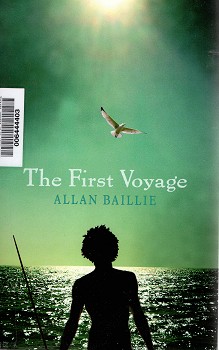 |
Barlow, Alex: Aboriginal Technology: Watercraft,
Macmillan Education Australia,1994.
[Junior publication]
Trove
http://trove.nla.gov.au/work/11066240
Brierly, Oswald W.B.:
New Guinea coast and Cape York area during the voyage of H.M.S. Rattlesnake, ca. 1849-1850]
State Library of NSW
http://www.acmssearch.sl.nsw.gov.au/search/itemDetailPaged.cgi?itemID=421776
For extracts and illustrations, see:
1850 McGillvray and Brierly: Catamarans, New Guinea.
| Burnum, Burnum (edited by David Stewart): Burnum Burnum's Aboriginal Australia : A Traveller's Guide. Angus & Robertson, North Ryde, 1988. Trove http://trove.nla.gov.au/version/45246864 |
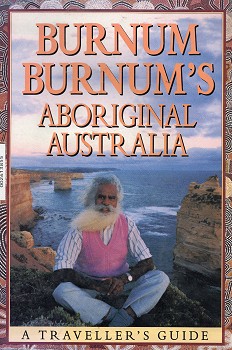 |
| Cruse, Beryl, Steward, Liddy and Norman,
Sue: Mutton fish: the surviving culture of Aboriginal people and abalone on the south coast of New South Wales. Aboriginal Studies Press, Canberra, 2005. Trove http://trove.nla.gov.au/version/15239200 |
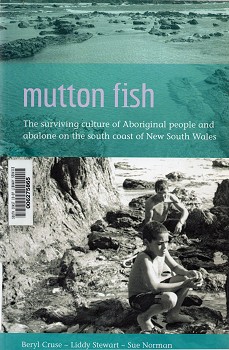 |
|
Dampier, William :
A Voyage to New
Holland.
A Voyage to New
Holland. James and John Knapton, Crown in St. Paul's Church-Yard, London. 1729. Internet Archive https://archive.org/details/avoyagetonewholl15675gut Dampier, William : Edited by James Spencer. Nonsuch Publishing,. The Mill, Brimscombe Port, Stroud, Gloucestershire, GL5 2QG, 2006. Trove http://trove.nla.gov.au/work/14396843 For extracts and illustrations, see: 1700 William Dampier: Voyage Around the World. |
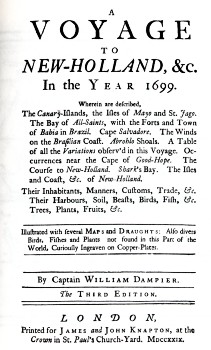 |
| Davidson, Daniel
Sutherland: The Chronology of Australian Watercraft. Journal of the Polynesian Society Volume 44 (extracts) Thomas Avery & Sons, New Plymouth, New Zealand, 1935. Trove http://trove.nla.gov.au/version/31577127 First published as: Davidson, D. S.: The Chronology of Australian Watercraft. Journal of the Polynesian Society New Plymouth, New Zealand, XLIV, No. 1, 1935, pages 1-16, 69-84, and 137-153. For extracts and illustrations, see: 1932 D.S. Davidson: Chronology of Australian Watercraft. |
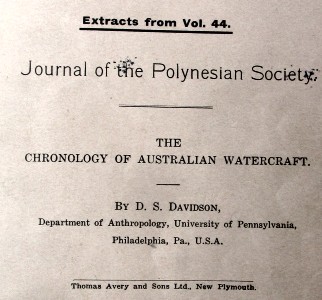 |
| Dumont D'Urville: Two Voyages to the South
Seas Translated by Helen Rosenman Melbourne University Press, 1987. Volume 1: Astrolabe 1826-1829 Introductions by Helen Rosenman Chapter VIII: Westernport to Port Jackson and Sojorn in that Port. Chapter X: The Natives of New South Wales Trove http://trove.nla.gov.au/work/12818593 For extracts and illustrations, see: Dumont d'Urville : Voyage of the Astrolabe, 1826. |
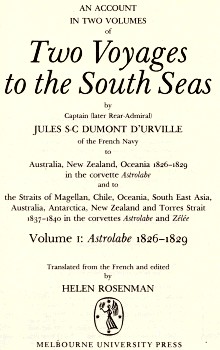 |
| Dunmore, John: From Venus to Antarctica : the life of Dumont
D'Urville. Exisle
Publishing, Auckland, New Zealand, 2007.
|
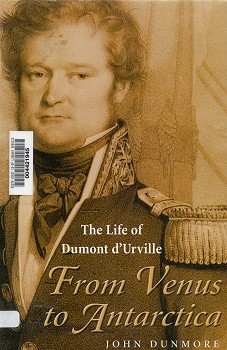 |
| Dyer, Colin:
The French Explorers and the
Aboriginal Australians 1772-1839. University of Queensland Press, St. Lucia, Queensland, 2005. Selections quoted in 1802 Louis de Freycinet : Canoes of Tasmania. |
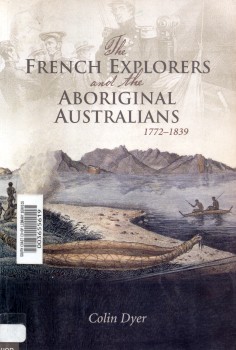 |
|
Edwards, Robert:
Aboriginal Bark Canoes of the Murray Valley.
South Australian Museum, Rigby, 1972. Trove
http://trove.nla.gov.au/work/21980480 For extracts and illustrations, see: 1972 Robert Edwards: Aboriginal Rafts and Canoes. |
.
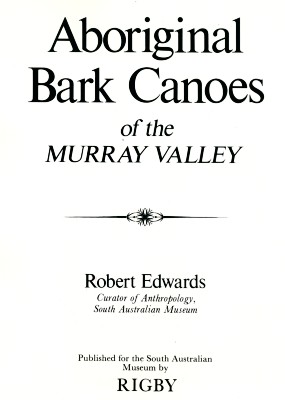 . . |
| Flood, Josephine: Archaeology of the Dreamtime : the story of prehistoric Australia and its people. Collins, Sydney, revised edition 2004 (first published 1983). Trove http://trove.nla.gov.au/work/5518084 |
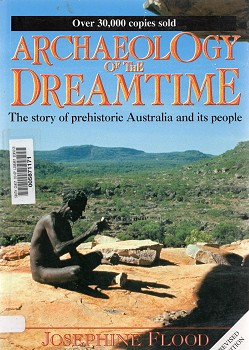 |
| Garran, Andrew (editor): Picturesque Atlas of Australasia. Picturesque Atlas Publishing Company, Sydney, 1886-1888. Illustrated under the supervision of Frederic B. Schell, assisted by leading colonial and American artists. With over eight hundred engravings on wood. Published to coincide with celebrations of the centennial (1788-1888), Picturesque Atlas of Australasia was one of the most significant cultural projects in 19th-century Australia. The project was the initiated by an American company, who established a separate publishing house, hence the contribution of "leading ... American artists." The book was prepared by a host of writers, artists, academics, and politicians and the 1100+ engravings on steel and wood were among the finest quality engravings produced anywhere at this time. Several images from the Picturesque Atlas of Australasia are reproduced in: Aboriginal rafts and canoes, from 1770. |
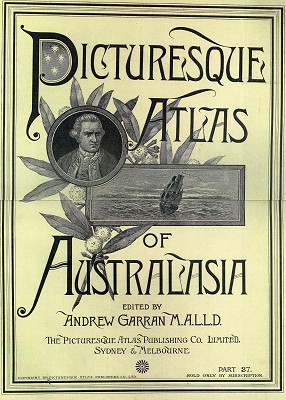 |
| Gatty,
Harold: The Raft Book. Lore of the Sea and Sky George Grady, New York, 1943. Trove http://trove.nla.gov.au/work/8725426 For extracts and illustrations, see: 1943 Harold Gatty: The Raft Book. |
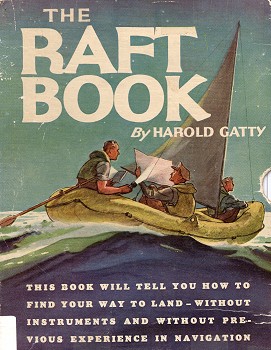 |
| Horden, Marsden: King of the Australian Coast. The Work of Phillip Parker King in the Mermaid and Bathurst, 1817-1822. Melbourne University Press, 1997. Trove http://trove.nla.gov.au/version/45158031 |
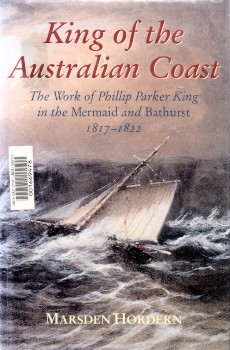 |
| 1946 Hornell, James: Water Transport- Origins and Early Evolution. Cambridge University Press, Cambridge,1946. For extracts, see: 1946 James Hornell : Water Transport. Online
at books.google.com |
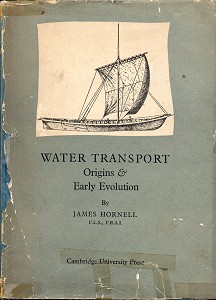 |
|
King, Phillip Parker:
Narrative of a Survey of the
Intertropical and Western Coasts ofAustralia
Performed Between the Years 1818 and 1822, Volume 1 John Murray, London,1827. Australian Fascimile Editions Number 30. Libraries Board of South Australia, Adelaide, 1969. googlebooks.com http://books.google.com.au/books?id=YocrAAAAIAAJ&source=gbs_navlinks_s For extracts and illustrations, see: 1818 Phillip Parker King: Aboriginal Rafts and Canoes. |
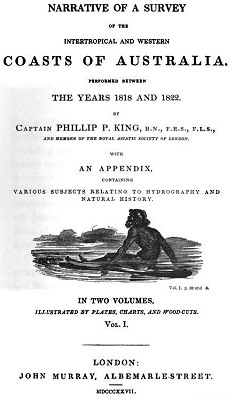 |
MacGillivray, John (1822-1867):
Narrative of the voyage of H.M.S. Rattlesnake, commanded by the late Captain Owen Stanley, during the years 1846-1850 : including discoveries and surveys in New Guinea, the Louisiade Archipelago, etc.; to which is added the account of Mr. E. B. Kennedy's expedition for the exploration of the Cape York Peninsula / published under the sanction of the Lords Commissioners of the Admiralty.
T. and W. Boone, London, 1852, Volume 1.
Project Gutenberg
http://gutenberg.net.au/ebooks/e00031.html
Internet Archive
https://archive.org/details/narrativeofthevo12433gut
For extracts and illustrations, see:
1850 McGillvray and Brierly: Catamarans, New Guinea.
|
McGrail, Sean:
The Ship [series] Rafts, Boats and Ships - From Prehistoric Times to the Medieval Era. National Maritime Museum London, 1981. Trove For extracts and illustrations, see: 1981 Sean McGrail : Rafts, Canoes and Boats. |
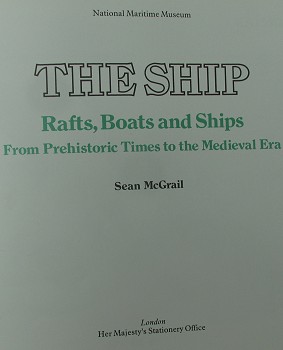 |
Martin James: Explorations in North-Western Australia.
Journal of the Royal Geographical Society of London, 1865,
Volume XXXV, pages 237-289.
Communicated by the Governor of Western Australia, through the Colonial Office.
For extracts see:
1863 James Martin: Rafts in NW Australia.
www.googlebooks- Ned Overton, May 2014.
http://gutenberg.net.au/ebooks14/1402201h.html#ch-01
| Muekee, Stephen, and
Shoemaker, Adam: Aboriginal Australians - First Nations of an Ancient Continent Thames and Hudson, London, 2004. Trove http://trove.nla.gov.au/version/44897301 |
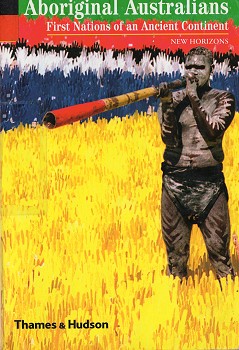 |
|
Mulvaney, D. J.: The Prehistory of
Australia |
| Organ,
Michael: Including a Chronological Bibliography 1770-1990 Aboriginal Education Unit Wollongong University, 1990. Trove http://trove.nla.gov.au/work/20873445 For extracts, see: 1797-1892 Michael Organ (ed.): Canoes of SE Australia. |
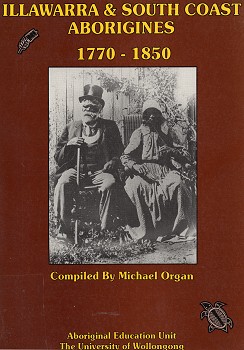 |
Oxley, John: Journals of two expeditions into the interior of New South Wales, London. 1820, pages 332-333.
Pearson, Joseph: Relationships of the Tasmanian Canoe-Raft
Radcliffe-Brown, A R: Australian Rafts in Man Vol 16 No.4 (1916)
Rienits, Rex and Thea: The Voyages of Captain Cook, Paul Hamlyn, London, Sydney, 1968.
| Roberts,
Alice: The Incredible Human Journey BBC - Bloomsbury Publishing 36 Solo Square, London, WID 3QY, 2009. Illustrations by Alice Roberts. Maps by Dave Stevens. Hard cover, 376 pages, colour plates, black and white illustrations and maps, References, Acknowledgements, Index. Review. A review and reappraisal of the latest available archaeological and genetic evidence of the population of the earth by human beings critically implies that a large portion was accomplished by coastal movement, and subsequently along river systems. Although the book does not directly deal with the exploration of the Pacific by the peoples of Polynesia, clearly the man's relationship with the marine environment is long standing. Item courtesy of Shoalhaven City Library. For extracts, see: 2009 Alice Roberts: The Human Journey. |
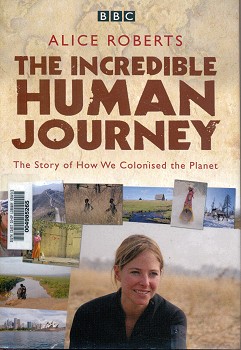 |
Roberts, Kenneth G., Shackleton, Philip:The Canoe - A History of the Craft from Panama to the Arctic.
MacMillan of Canada, Toronto, 1983.
|
Roth,
Henry Ling:
[assisted by Marion
E. Butler , James Backhouse Walker, John George Garson, Edward Burnett
Taylor]
The Aborigines of Tasmania F. King & Sons, England,
1899.
Internet Archive http://archive.org/details/aboriginestasma00tylogoog For extracts and illustrations, see: 1899 Henry Ling Roth: Rafts, Canoes and Swimming, Tasmania. Also note; Transport and trade / by Walter E. Roth Sydney : [Australian Museum], 1910 19 p., [7] leaves of plates : ill. ; 24 cm. Series: North Queensland ethnography: bulletin ; no.14 Caption title. "From Records of the Australian Museum, Vol.viii, no.1." - Cover. Call Number: N 507 AUS v. 8. |
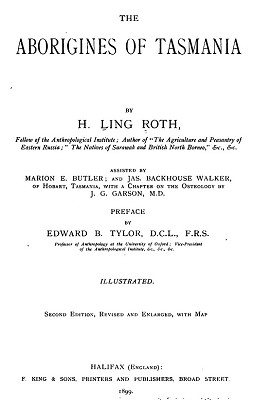 |
| Smyth, Robert
Brough Volume II The Government of Victoria. Government Printer, London, 1878. Internet Archive https://archive.org/details/aboriginesvicto00smytgoog |
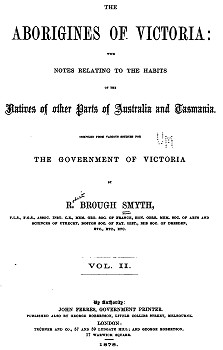 |
|
Discoveries in Australia, with an account of the coasts and rivers explored and surveyed during the voyage of H.M.S. Beagle in the years 1837-38-39-40-41-42-43, by command of the Lords Commissioners of the Admiralty: also, a Narrative of Captain Owen Stanley's visits to the islands in the Arafura Sea. Volumes One and Two. T. and W. Boone, London, 1846. Project Gutenberg http://www.gutenberg.org/files/12146/12146-h/12146-h.htm For extracts, see: 1842 J. Lort Stokes: Swimming, Floats and Rafts, North West Australia. |
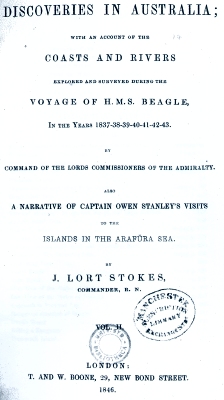 |
Thomas, N. W.: Australian Canoes and Rafts.
Journal of the Royal Anthropological Institute,1905, XXXV, pp. 56-7
Not yet located.
| Thomson,
Donald:
Donald
Thomson in Arnhem Land Currey O'Neil, 1983. Miegunyah Press,Carlton, Victoria, c2003. For extracts, see: 1930 Donald Thompson: Arnhem Land. |
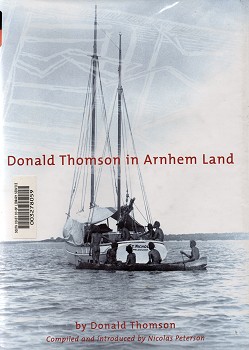 |
| Wesson,
Sue
(editor): A History of the Aboriginal people of the
Illawarra 1770 to 1970 Based on a report by Kate Gahan, 2004. Department of the Environment and Conservation, NSW, 2005. The Arrernte word Awelye, from Central Australia, describes the interrelationship of everything; plant, animal, earth and language. Aboriginal knowledge about: plants, animals, non-living things, spirit, economy, aesthetics, kin, responsibility, and journeying bind categories of information with one another. In other words nothing can be considered in isolation. By contrast, non-indigenous knowledge structures involve the separation of information into ever smaller parts for detailed examination. - 6 page. |
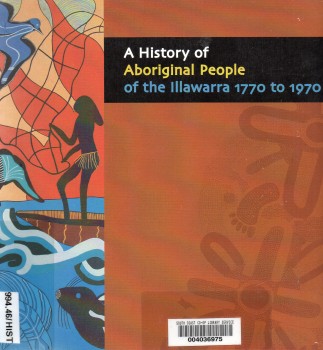 |
Also
Ida Lee (Mrs. Charles Bruce Marriott: The Coming of the British to Australia 1788 to 1829.
LONGMANS, GREEN, AND CO.
39 PATERNOSTER ROW, LONDON
NEW YORK AND BOMBAY
1906
http://gutenberg.net.au/ebooks09/0900091h.html
Botantical References
Many thanks to Dr Nicholas H. de Jong.
Gary Leonard: Eucalypts of the Sydney Region
Robinson, L.: Field Guide to Native Plants of Sydney, Kangaroo Press, 1991.
Fuller, L.: Native Trees of Central Illawarra, Weston & Co., 1985.
Kevin Mills: The Natural Vegetation of the Jervis Bay Region of New South Wales, UOW, Wollongong, 1993.
Kevin Mills: The Natural Vegetation of the Jervis Bay Region of New South Wales, UOW, Department of Geography, [1998].
| home | catalogue | history | references | appendix |
